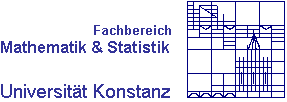

| |
 |
 |
|
|
Analysis of lattice Boltzmann methods
An important result of kinetic theory is the mathematical explanation of the fact that the average behavior of a large number of particles which interact through binary collisions with conservation properties closely resembles the non-linear dynamics attributed to continua like gases or liquids. In the lattice Boltzmann method this general relation between particle dynamics and macroscopic transport equations is exploited. Like in other kinetic schemes the trick is to efficiently discretize the linear, scalar differential operator of the Boltzmann equation which is much simpler than the direct discretization of the often non-linear systems of macroscopic target equations. Unfortunately, the simpler differential operator in the Boltzmann equation comes with the price of twice as many independent variables and a stiff behavior where the complicated non-linear collision operator is dominant. In the lattice Boltzmann method, the higher dimensionality is mitigated by restricting the additional independent variables to a set of very few elements - some vectors of a regular lattice. Moreover, the collision operator is replaced by a simple relaxation approximation. These simplifications allow for efficient implementations while ensuring the correct limit behavior of the dynamics. A structural advantage of the lattice Boltzmann approach is that the design of the algorithms is successfully guided by physical considerations involving conservation and symmetry. However, it is often difficult to assess the consequences of the kinetic discretizations for the macroscopic target equations due to the intermediate singular limit. For example, there may be quite natural kinetic boundary algorithms (like specular or diffuse reflection of the particles) but whether they represent classical Navier-Stokes boundary conditions to a certain accuracy is generally not obvious. Therefore, a sustainable method for the analysis of lattice Boltzmann algorithms is required. In this project such methods of analysis have been developed. They are used to analyze given algorithms and to develop new approaches. In the following, various aspects are listed. Asymptotic analysis of numerical schemesThe general idea to consider numerical schemes as sets of equations depending on a small parameter (the discretization length, for example) naturally leads to the idea of applying methods of asymptotic analysis. This point of view allows to analyze lattice Boltzmann methods in the same way as any other finite difference scheme.
Analysis and design of lattice Boltzmann boundary algorithmsThe construction of suitable boundary algorithms for lattice Boltzmann schemes is quite involved because the number of required boundary conditions on the kinetic level usually outnumbers the available conditions for the macroscopic target equations. The missing conditions have to be selected in such a way that they are compatible with the solution of the limit equation. We have developed Dirichlet boundary conditions as well as outflow conditions like the do-nothing rule, the no-stress or the Neumann condition and transmission conditions for two-phsae flows. Also for the temporal boundary (initial values), special considerations are necessary to avoid initial layers.
Convergence of lattice Boltzmann schemesThe relation between the lattice Boltzmann equation and the incompressible Navier-Stokes equation can be analyzed rigorously. Using a general stability result for linearized collision operators, the ideas can be transfered to the lattice Boltzmann schemes.
A Matlab implementation of 2D lattice Boltzmann schemes on general domainsTo support the development of lattice Boltzmann boundary conditions, a flexible 2D lattice Boltzmann code has been developed in the Matlab environment. The flow geometry is provided by a parametric description of the boundaries. Various routines support the visualization of the results.
|